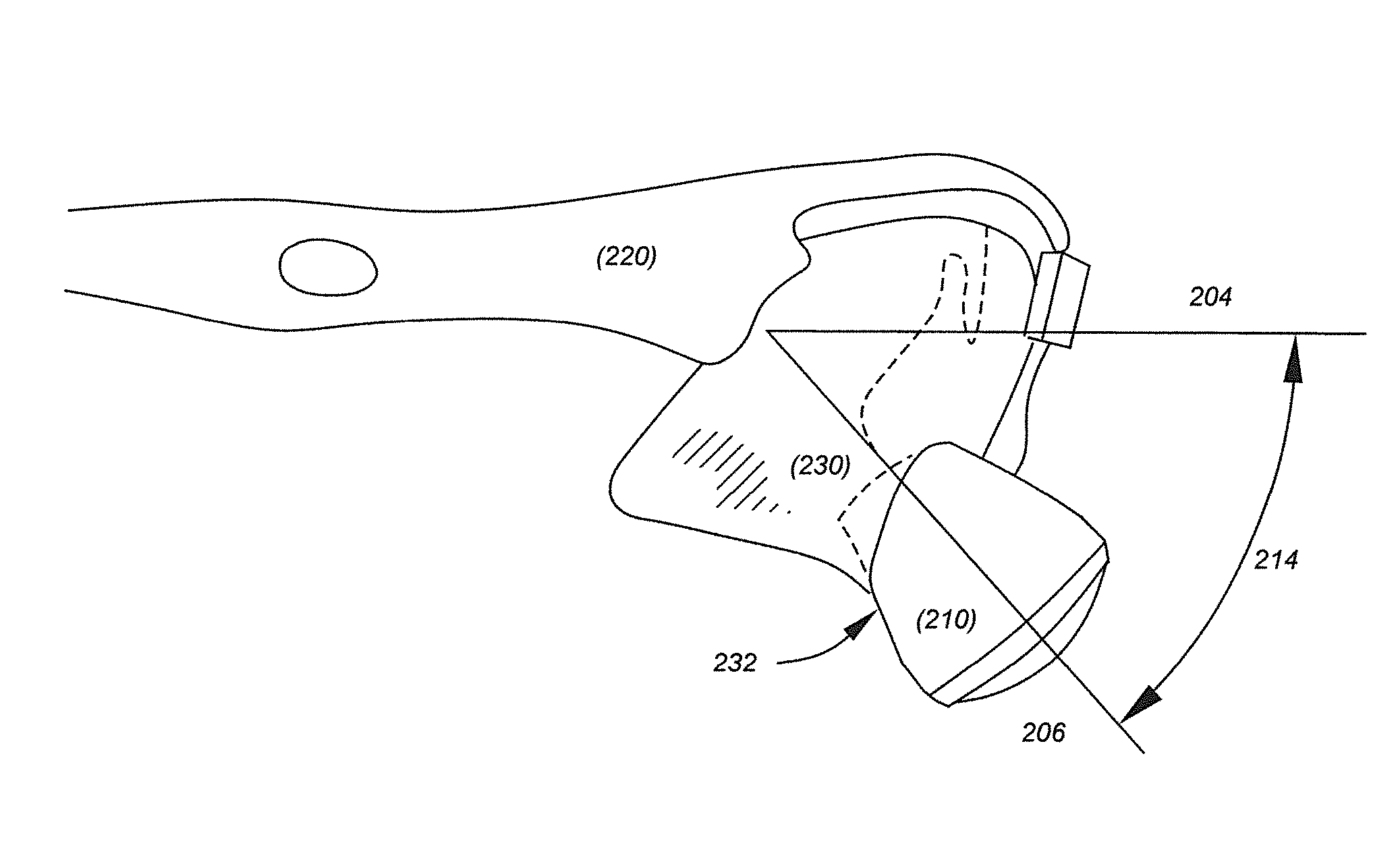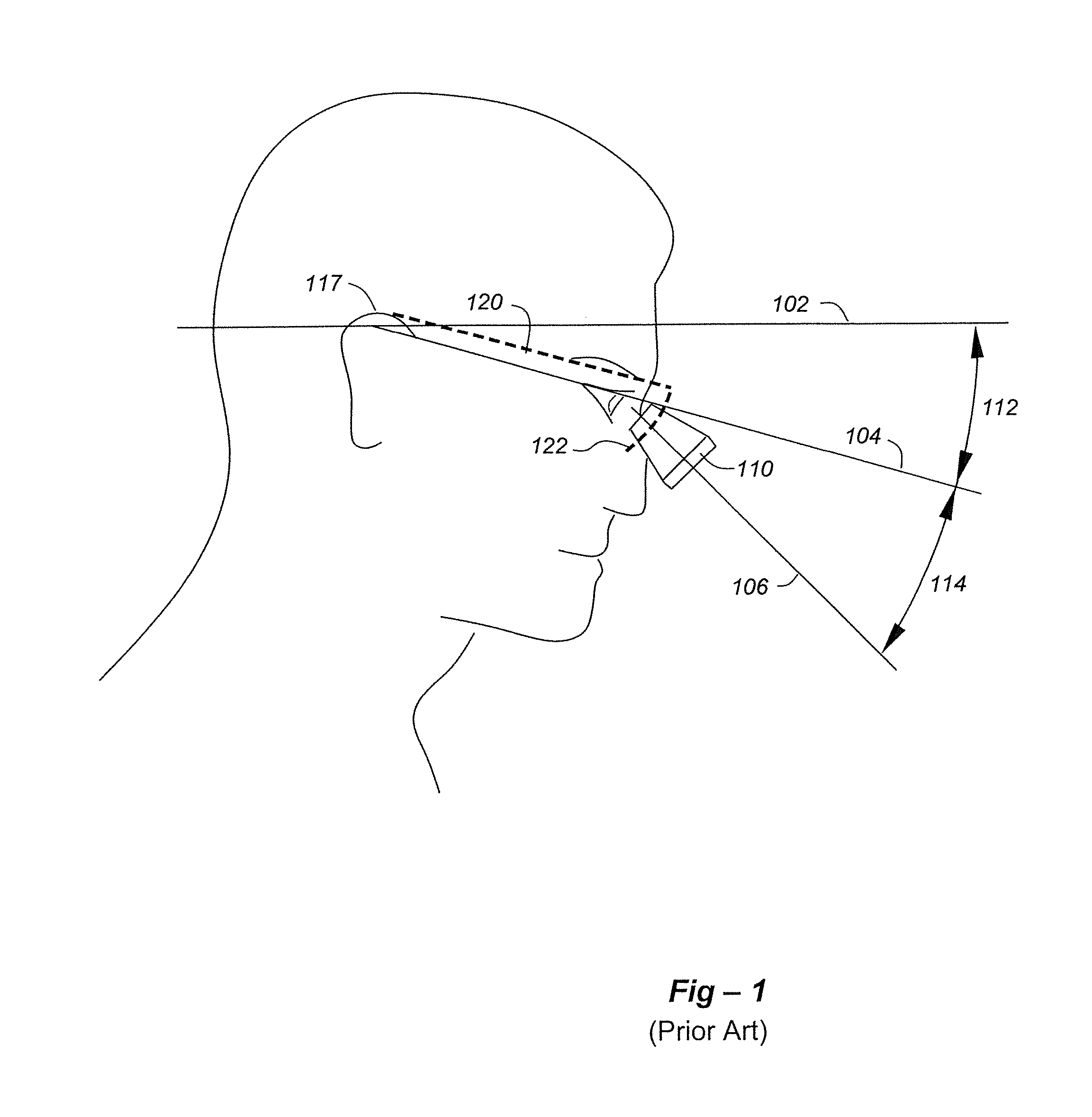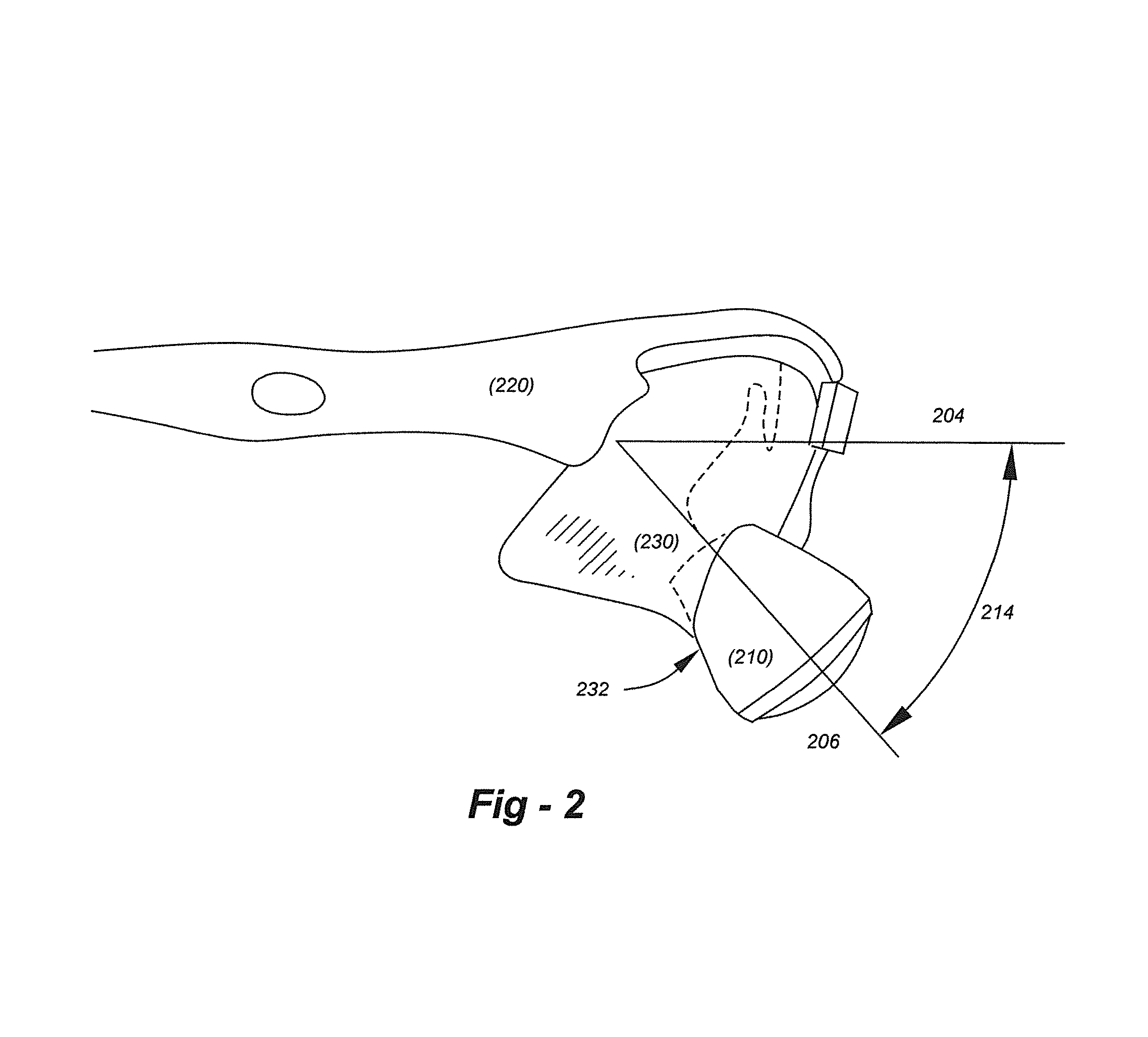Through-the-lens (TTL) loupes with improved declination angle
a technology of through-the-lens and loupes, which is applied in the field of telemicroscopic loupes, can solve the problems of neck strain, small declination angle, limited positioning of existing ttl oculars, etc., and achieve the effect of stabilizing the pointed ends and improving the declination angl
- Summary
- Abstract
- Description
- Claims
- Application Information
AI Technical Summary
Benefits of technology
Problems solved by technology
Method used
Image
Examples
Embodiment Construction
[0010]In order to overcome the limitations of the prior art in terms of limited declination angle, this invention is directed to a new mounting method that significantly increases the declination angle and promotes a more healthy posture. In broad and general terms, instead of forming a complete bore through each eyeglass lens surrounded by lens material, the lower portion of each bore intersects with the bottom edge of each lens, such that a portion of the barrel of each ocular actually extends below the bottom edge of each lens, thereby increasing the declination angle.
[0011]FIG. 2 is a side view that illustrates a typical configuration. Eyeglass frames 220 include lenses 230 through which ocular(s) 210 are mounted. The declination angle 214 is shown between reference line 204 and the optical axis 206 of the ocular 210. Again, the temple arm of the frame 220 may be used as the reference line if the temple arms are mounted at the same level with eyes. Although the frames depicted a...
PUM
 Login to View More
Login to View More Abstract
Description
Claims
Application Information
 Login to View More
Login to View More - R&D
- Intellectual Property
- Life Sciences
- Materials
- Tech Scout
- Unparalleled Data Quality
- Higher Quality Content
- 60% Fewer Hallucinations
Browse by: Latest US Patents, China's latest patents, Technical Efficacy Thesaurus, Application Domain, Technology Topic, Popular Technical Reports.
© 2025 PatSnap. All rights reserved.Legal|Privacy policy|Modern Slavery Act Transparency Statement|Sitemap|About US| Contact US: help@patsnap.com



